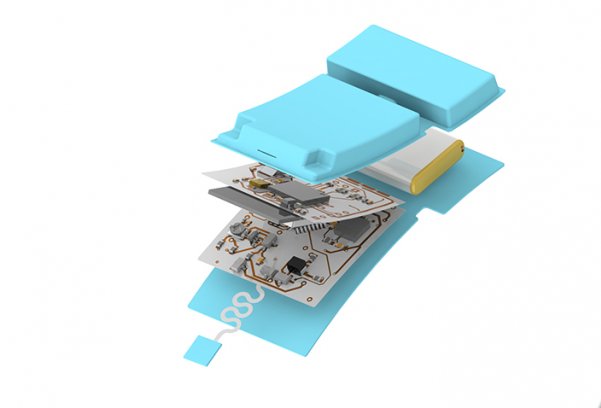
Non-invasive deep dive into the body
Device provides high-resolution imaging by penetrating deep tissues, offering detailed insights into muscle function.

18th November 2024
Innovation in Textiles
|
San Diego, CA, USA
Engineers at the University of California San Diego have developed a wearable ultrasound device that can provide long-term, wireless monitoring of muscle activity with potential applications in healthcare and human-machine interfaces.
Designed to stick to the skin with a layer of adhesive and powered by a battery, the device enables high-resolution tracking of muscle function without invasive procedures.
In tests by the team of Sheng Xu at the Aiiso Yufeng Li Family Department of Chemical and Nano Engineering, the device was worn over the rib cage to monitor diaphragm motion and thickness, which are useful for assessing respiratory health.
“By tracking diaphragm activity, the technology could potentially support patients with respiratory conditions and those reliant on mechanical ventilation,” said Professor Joseph Wang of the team.
Additionally, the researchers successfully used the device on the forearm to capture hand and wrist muscle activity, which enabled its use as a human-machine interface to control a robotic arm and play a virtual game.
The technology may offer a promising new alternative to the current clinical standard, electromyography (EMG), which involves applying metal electrodes on the skin to record electrical muscle activity. Despite EMG’s longstanding use, it suffers from low resolution and weak signals. Signals from multiple muscle fibres for example, often blend together making it challenging to isolate the contributions of specific muscle fibres.
Ultrasound, however, provides high-resolution imaging by penetrating deep tissues, offering detailed insights into muscle function. The ultrasound technology that Xu’s team have developed has the additional advantages of being compact, wireless and low-power and could potentially be worn by individuals during their daily routines for continuous, long-term monitoring.
Single transducer
The device is housed in a flexible silicone elastomer casing and consists of three main components – a single transducer for sending and receiving ultrasound waves, a custom-designed wireless circuit that controls the transducer, records data and wirelessly transmits the data to a computer, and a lithium-polymer battery that can power the system for at least three hours.
A key innovation is the use of a single ultrasound transducer to sense deep tissues effectively. The transducer emits intensity-controlled ultrasound waves and captures radiofrequency signals that carry rich information, enabling clinical applications such as measuring diaphragm thickness.
Using these signals, the device can achieve high spatial resolution, which is key for isolating specific muscle movements. To extract additional insights from these signals, the researchers developed an artificial intelligence algorithm that maps the signals to their corresponding muscle distributions, enabling it to identify specific hand gestures from the collected signals with high accuracy and reliability.
When worn on the rib cage, the device can accurately monitor diaphragm thickness with submillimetre precision. Diaphragm thickness is a metric used in the clinic to evaluate diaphragm dysfunction and predict outcomes in ventilated patients. By analysing muscle motion, the researchers could also detect different breathing patterns, such as shallow and deep breaths. This functionality could help diagnose conditions linked to breathing irregularities, such as asthma, pneumonia and chronic obstructive pulmonary disease (COPD). In a small group trial, the device successfully distinguished breathing patterns of individuals with COPD from those of healthy participants.
When worn on the forearm, the device offers precise tracking of muscle motion in the hands and wrists. Thanks to the artificial intelligence algorithm, the system is capable of recognising various hand gestures solely from the ultrasound signals. The system is able to recognise 13 degrees of freedom, covering ten finger joints and three rotation angles of the wrist. As a result, it can capture even slight wrist and finger movements with high sensitivity.
In proof-of-concept tests, participants used the device on their forearms to control a robotic arm to pipette water into beakers. In another demonstration, they used the device to play a virtual game, using wrist movements to control a virtual bird’s flight around obstacles.
Moving forward, the researchers plan to improve the technology’s accuracy, portability, energy efficiency and computational capabilities.

Business intelligence for the fibre, textiles and apparel industries: technologies, innovations, markets, investments, trade policy, sourcing, strategy...
Find out more